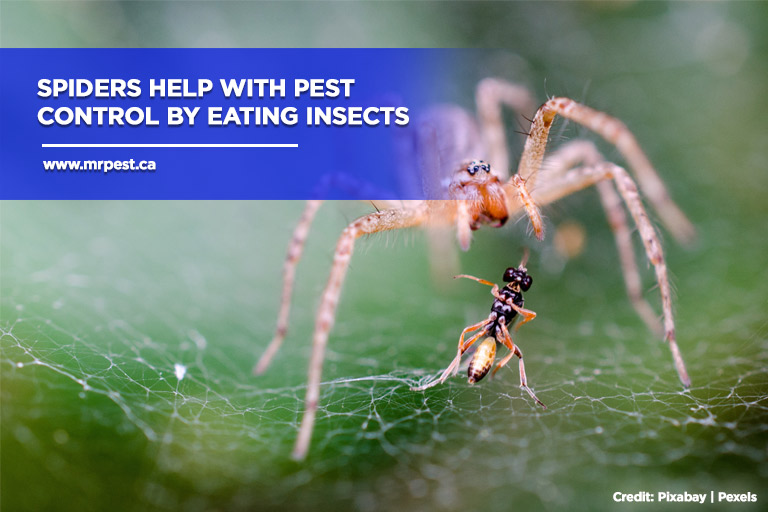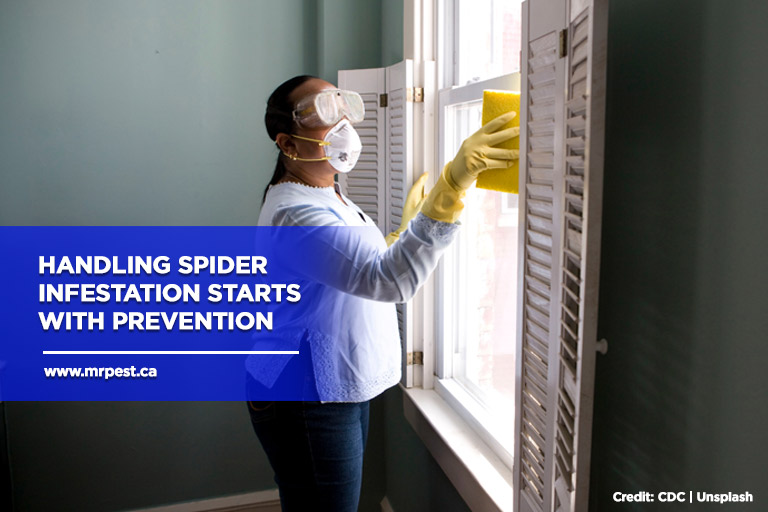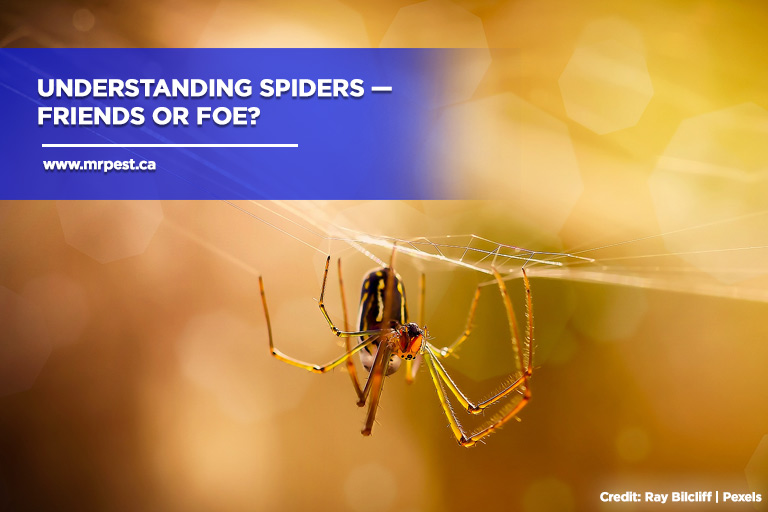Spiders are one of the most common household pests. Simultaneously, arachnophobia, or the fear of spiders, is one of the most common phobias in the world. When most homeowners see one, the usual reaction is to get rid of it either with a vacuum or a shoe. However, a few brave souls have found a way to live with them in the hopes of benefiting from their contributions.
Spiders are, for the most part, harmless. They also don’t create any structural or property harm. While spiders are beneficial, their numbers can become a problem in homes, garages, barns, cottages, and other structures. Their webs can make a home or structure look untidy and neglected. You can feel like you’ve walked into a terrifying movie scene if you’re dealing with a serious infestation.
Common Species of House Spiders
Spiders are one of the most misunderstood pests in the world, but also among the most intriguing. They come in a wide variety of shapes, sizes, and colours, with over 45,000 species worldwide (including several in Ontario). The physical make-up of all spiders is the same: eight legs, two body regions, and no wings or antennae.
Here are common types of house spiders in Canada:
- Cellar Spiders
One common house spider is the cellar spider, also known as daddy long legs. They are long-legged spiders that weave webs in the corners of cellars or wet basements. Cellar spiders are relatively harmless and may be managed by clearing their webs and lowering the humidity in the area.
- House Spiders
The house spider, also known as the American house spider, is well-known for infiltrating residences, sheds, and garages. Once inside, it prefers to construct its web in dark, quiet regions, such as attics, crawl spaces, basements, ceilings, window frames, and closets, with little human activity and plenty of insects to eat.
- Wolf Spiders
Wolf spiders are hairy and have a camouflage pattern that is a blend of orange, brown, black, and grey. Gardens, fields, meadows, grasslands, beaches, and the edges of ponds and marshes are among their preferred habitats. Grassy places, leaf litter, and little burrows or tunnels in the ground are also common nesting locations.
- Black Widow Spiders
The black widow spider is a rare species in Canada, found primarily near the Canada-United States border in the south. It is black and has a characteristic red hourglass-shaped pattern on its belly. It weaves a little silk web close to the ground and can be found in quiet areas such as garages and sheds, or outside beneath rocks or fallen trees. Because it is not hostile and prefers to retreat when disturbed, it will only bite in self-defence.
- Jumping Spiders
Jumping spiders are fast and have great eyesight and the ability to jump up to 25 times their own height. The most common jumping spider in Canada is the brave jumper. They thrive in gardens, yards, fields, and wooded areas. They often find themselves indoors by accident, riding on clothing and plants. While inside, jumping spiders take cover behind furniture, baseboards, mouldings, and gaps in wood flooring.
Understanding Spiders
- What Spiders Eat and Drink

Spiders eat cockroaches, earwigs, mosquitoes, flies, and moths, which are usual indoor pests. One spider can eat 2000 insects a year. They will consume the majority of the insects in your home if left alone, offering excellent home pest control.
- What Eats Spiders
Spiders feed on their own kind. When spiders meet, they often engage in a gladiator-style fight where the winner devours the loser. For example, the Long-Legged Cellar Spider is known to kill Black Widows, making it one of the best spiders to have around. This is why the population of common spiders can quickly change, from many tiny individuals to fewer, larger ones in a few days.
- Spider Bites
The majority of spiders found in Canada are harmless. In truth, out of the most common spiders, only two species are poisonous: the Black Widow and the Brown Recluse. Non-poisonous spiders, on the other hand, can bite you and your family, creating welt-like abrasions on your skin. Spider bites can be painful and irritating, and if not treated properly, they can cause serious harm. The risk of being bitten is reduced when spiders are kept out of the house.
It is important to remember, however, that the spiders never actively seek human interaction, and would rather run away. They only bite if they feel threatened or endangered.
- Problems Caused by Spiders
Although spiders are incredibly essential to our environment, there are still a number of reasons why we prefer to keep them out of our homes:
- Webs are difficult to remove and clean. Spiders create webs whether they are indoors or outdoors, and these webs may give any home an untidy and unappealing appearance. Because these critters enjoy making a lot of webs, you can find yourself in a never-ending battle to get rid of them.
- They multiply rapidly. If you only see a handful this month, expect to see a lot more next month. It won’t take long before they start falling from the ceiling into your table.
- Spider bites are the primary reason why people prefer keeping spiders out of the house. While house spiders are not out to bite humans, they will bite if they feel threatened. This frequently occurs when a spider is hidden beneath the sheets of a bed, in a shoe, or in another location where unexpected contact occurs.
- Benefits of Spiders
Before you crush the next spider you see, here are a few reasons why are spiders important to humans:
- Prevents disease spread
Many house pests and insects are disease carriers. Spiders eat insects that can spread diseases to humans and pets, such as fleas, cockroaches, flies, and mosquitoes.
- Controls insect population
Spiders eat other insects and are very active in seeking where they are and how to catch them. As beetles, moths, flies, mosquitoes, wasps, and other insects are eaten, the insect population in your home drops. Consider spiders as a sign that your home is infested with other insects. If you have a lot of spiders in your house, there could be a far larger population of pests around.
Best Way to Handle a Spider Infestation

The primary way to get rid of spiders is to prevent them from getting inside in the first place. Cleaning your home minimizes the number of insects that serve as food for spiders. Fix windows and doors, and screens to keep pests out of your home.
A glass jar and a piece of stiff paper can also be used to catch live spiders, which can then be released outside. If necessary, use a fly swatter, rolled-up paper, or magazine to kill the spider. If you’re going to use a pesticide to get rid of them, make sure you read the label so you’re using the right chemical for the job.
If you want to ensure that the spider treatment for your home is effectively implemented, hiring an experienced pest control specialist to deal with the infestation is your best option.
For reliable spider control in Barrie, Midland, and Orillia, call Mr. Pest Control at (705) 739-7378!



